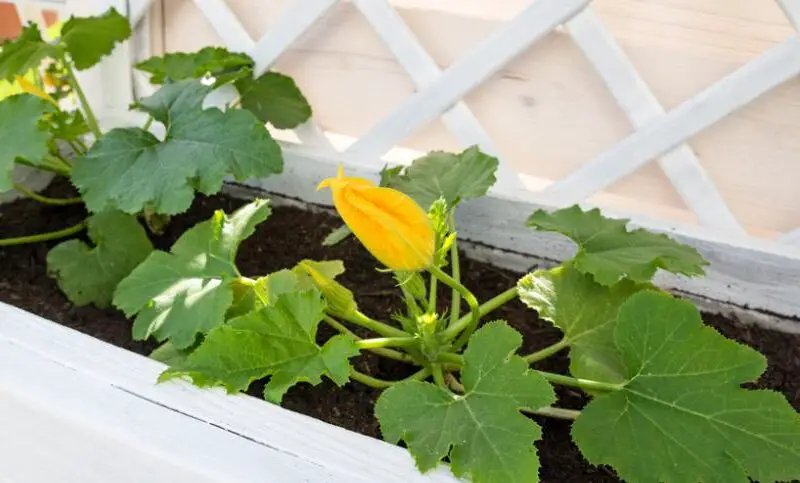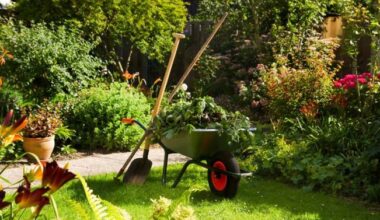Not owning a garden should not prevent you from growing vegetables, even a small outdoor is sufficient in most cases.
Zucchini, for example, can be placed in a planter box on a balcony or terrace, and you can plant potted plants or make your own seedlings.
Contents
Can we plant all the courgettes in a raised bed?
All the varieties of courgettes can be installed in raised beds, but the runners are spread out over much more than 1 m, so be careful with the space you have available. You can opt for non runner varieties, for example the ‘Ronde de Nice’ is well suited for growing in a raised bed, just like the ‘Diamant’.
On the other hand you can choose expensive varieties to climb on a trellis, saving space! On the other hand, you will have to tie them as you go along, because they do not have tendrils.
How to plant the courgette in a raised bed
Planted or seeded, you will be careful to choose the right container for your feet, but also a soil rich enough to feed this greedy and a location of choice.
Which raised bed to choose
The courgette is a rather voluminous plant raised bed, it needs a high and wide planter. The good depth of the raised bed is 20 inches, for as many sides. As far as the material is concerned, you can choose between terracotta, which is porous and breathable but heavy, and plastic, which is light and economical but heats up quickly and does not let air or water through. There are also raised beds made of geotextile that offer both lightness and porosity.
You will install your plants in the sun, but beware of hot exposures, prefer in this case a semi-shade for the hottest hours.
At the bottom of the raised bed you will spread a thick drainage layer, made with gravel or clay balls for example. The potting soil, which is specially designed for gardening, should be judiciously supplemented with decomposed manure or compost, at a rate of 1 l of potting soil for 1 l of organic matter. Thus enriched, the substrate will offer, in addition to the nutrients essential to the development of the courgette and its fruits, a material with a good water retention capacity.
How to take care of courgettes
Its cultivation, in raised beds or in the ground, is very simple. The advantage of the raised bed is that the vegetable will develop less than in the ground, so it will be easier to control. But how to take good care of a courgette plant?
How to water the courgettes in a raised bed
Use a watering can for your courgettes to water well at their foot. Wet foliage is indeed the open door to the development of fungal diseases such as mildew. Prepare the watering can a few hours before watering, to let the water reach room temperature, and prefer to water all your plants with recuperated rainwater. Otherwise, let the water stand for at least 24 hours.
Even in a raised bed, mulching is still a good practice because it insulates the substrate and roots, avoiding the excessive temperature rises that can occur in a small volume of soil. And of course it prevents water from watering or rainfall from evaporating too quickly. Always remember, once the watering is done, to empty the saucers under your raised beds, few plants appreciate excess humidity and this vegetable is no exception.
Water as soon as the substrate is dry on 0.5 inch, this summer vegetable needs freshness. Depending on the capacity of the container, you will need between 0.8 and 1.3 gallons per watering. Water in 2 passes, so that the substrate absorbs more water.
How to fertilize it?
You can bring a little compost directly into the watering water or add nettle or comfrey manure.
How to cut it?
You will prune as it develops, prefer to remove the adult leaves, which are very large and protrude all around the raised bed.
Diseases and parasites of the courgette in the raised bed
In a raised bed on a balcony or terrace, your young plants are unlikely to be attacked by slugs and snails. On the other hand be careful of red spiders, actually mites, which are often present when the weather is hot and very dry. You will be able to get rid of them by watering the leaves (to be done in the morning, the foliage must dry quickly).
The most common disease in this vegetable is powdery mildew, which covers the leaves with its characteristic white felting. You can cut the affected leaves quickly, but usually this disease occurs rather late in the season and does not prevent the plant from producing beautiful and edible fruit.
Summary
Growing courgettes in a raised bed is almost as simple as growing them in the ground. The additional constraints are more frequent watering and regular pruning of the leaves and stems to prevent the courgette from running all over your balcony! Not much to have the pleasure of harvesting your vegetables, no matter how small your space is.








